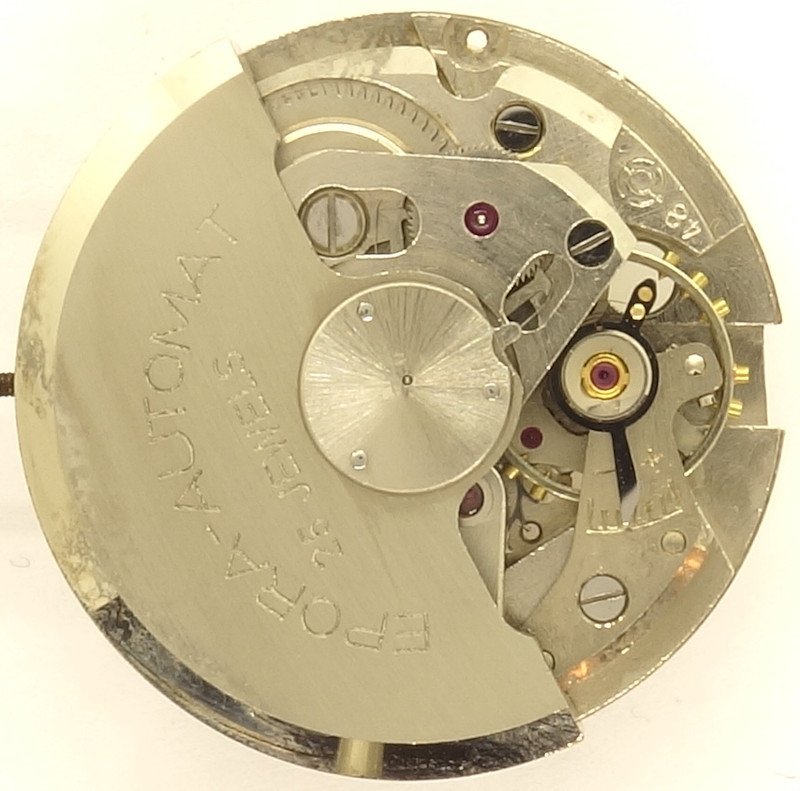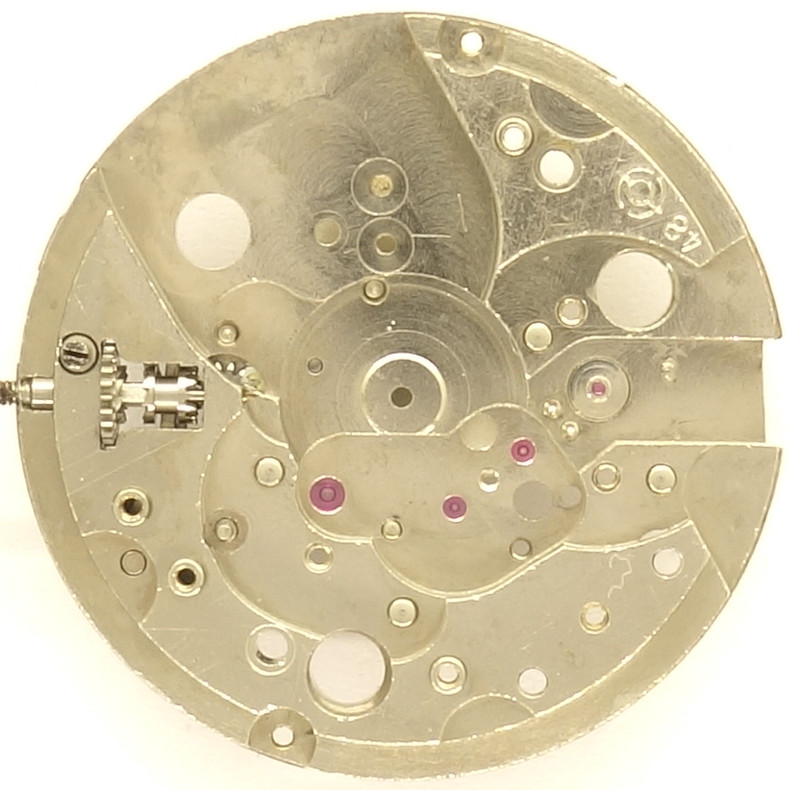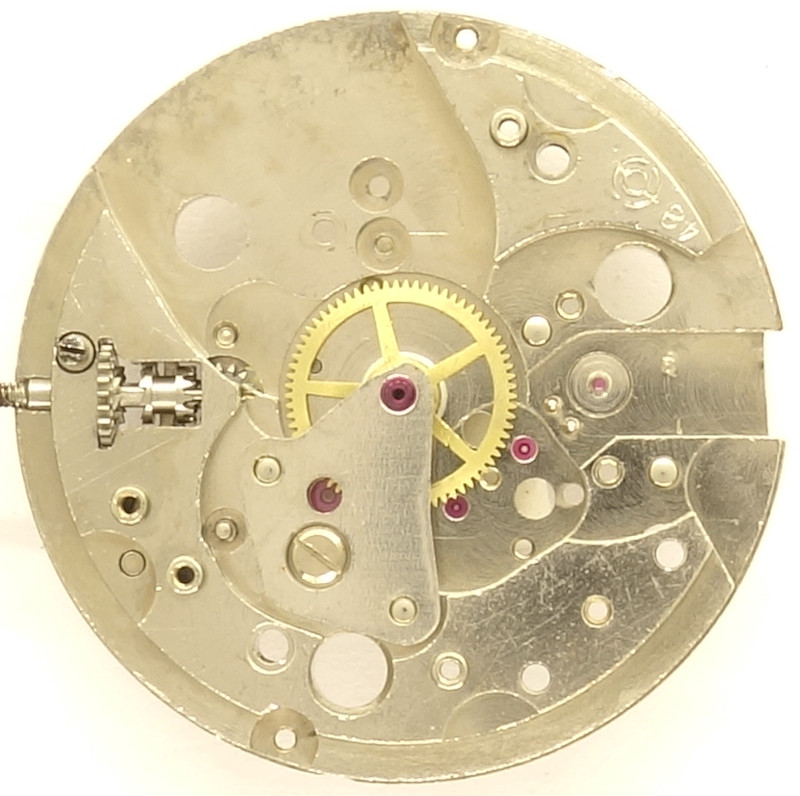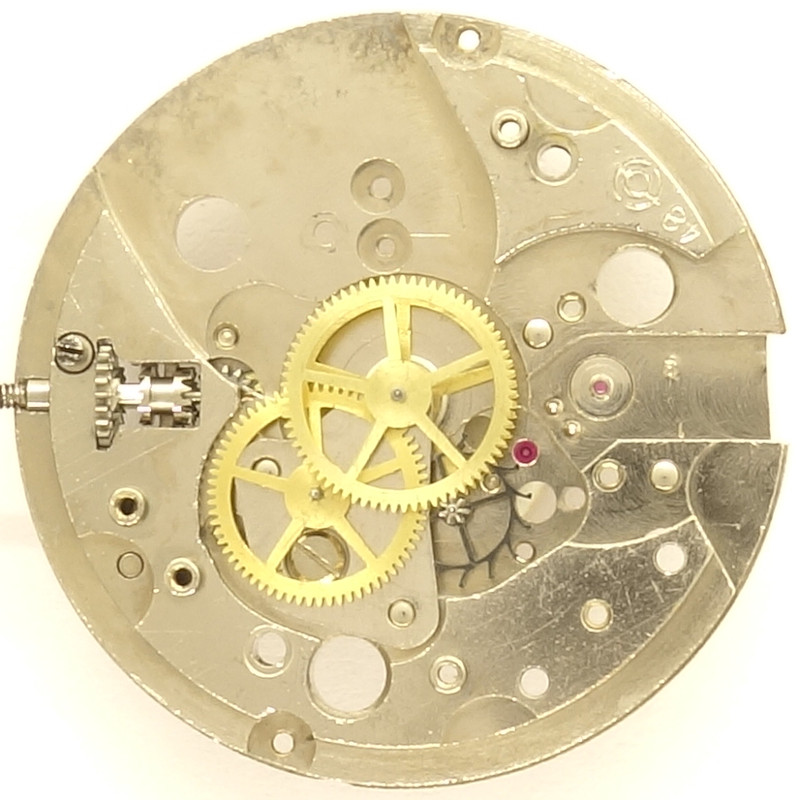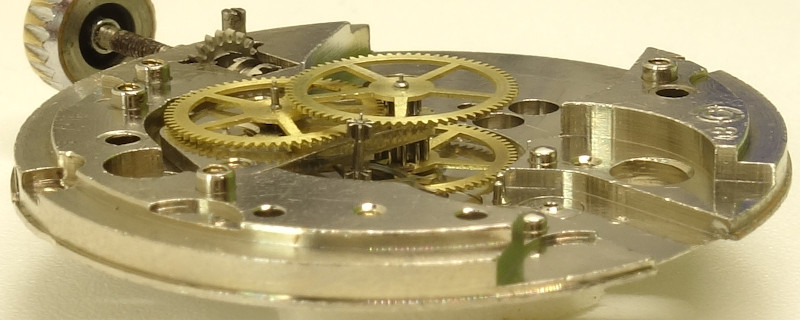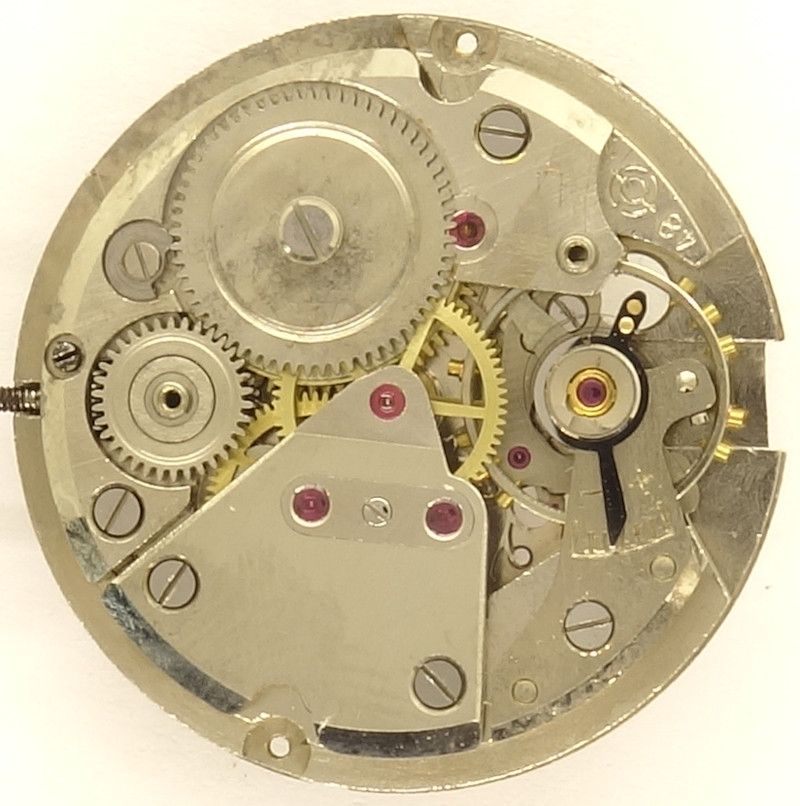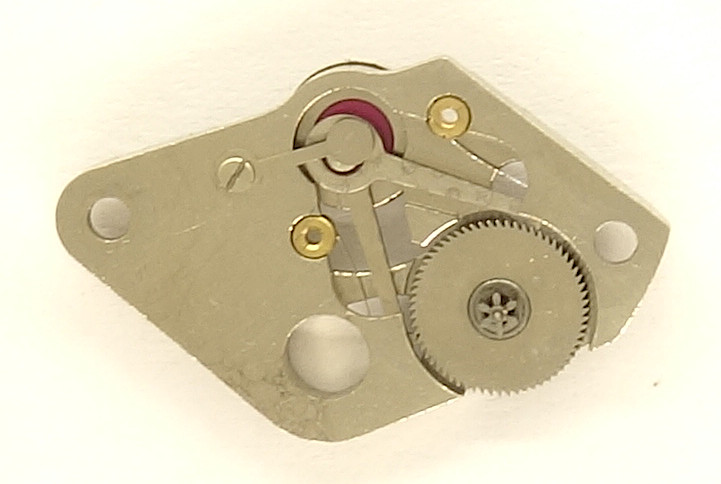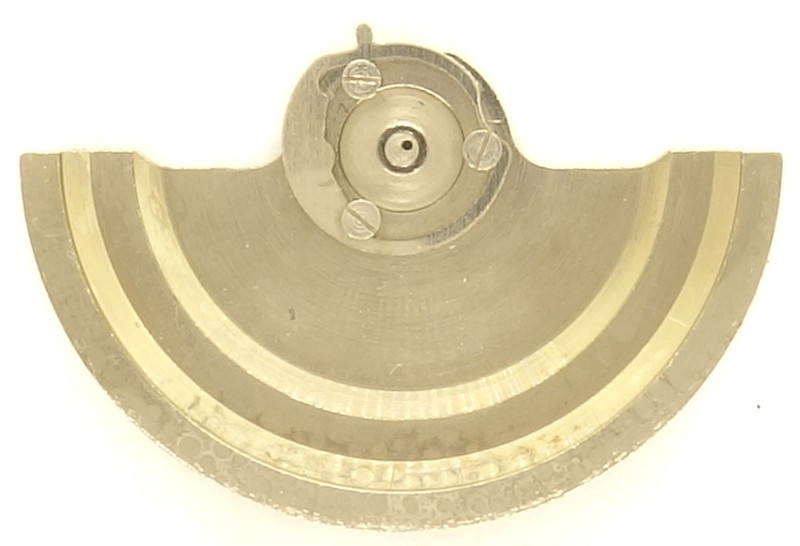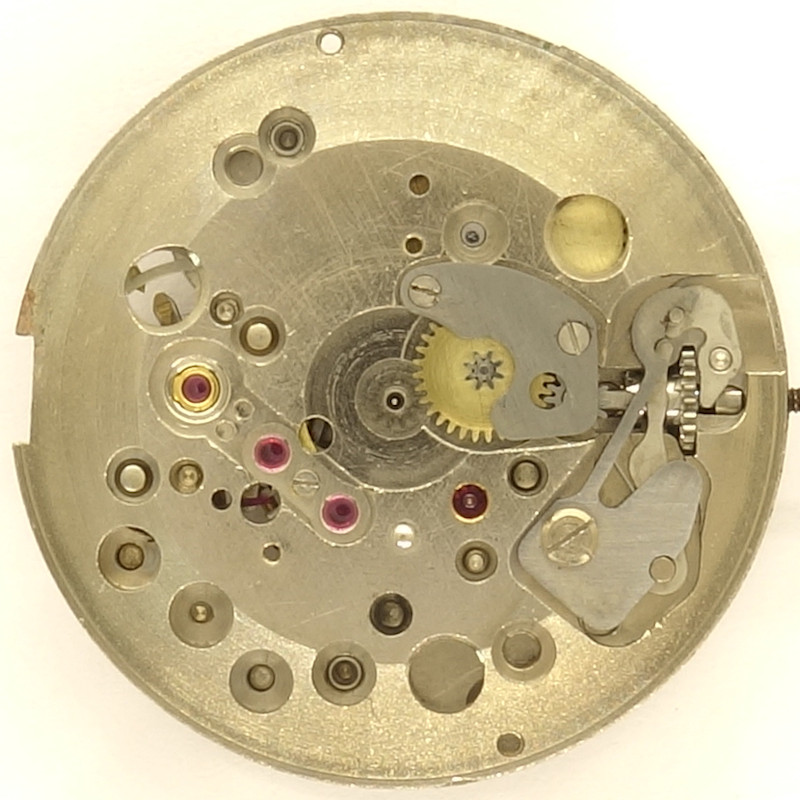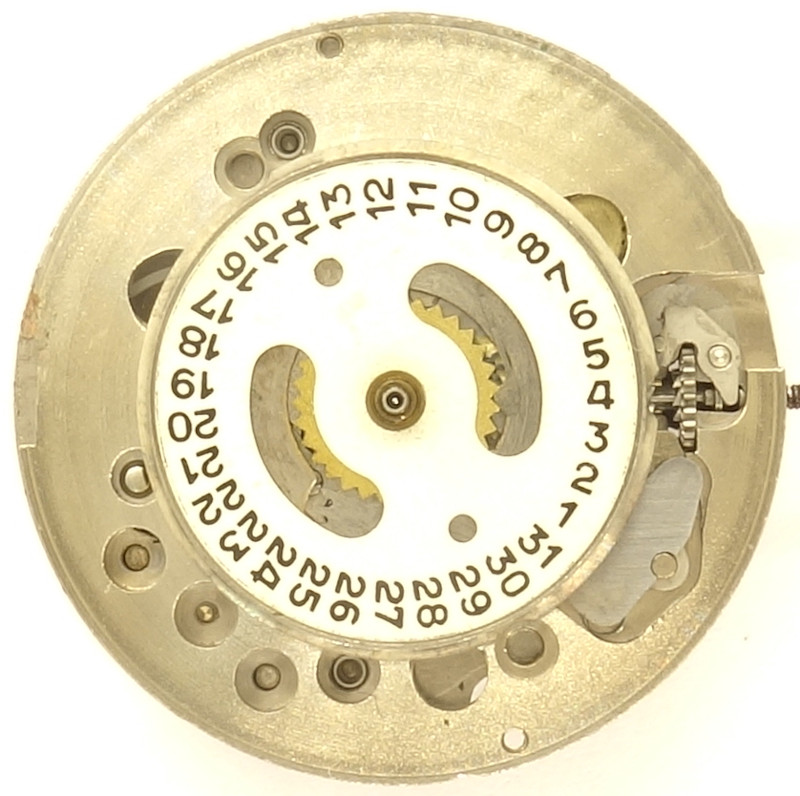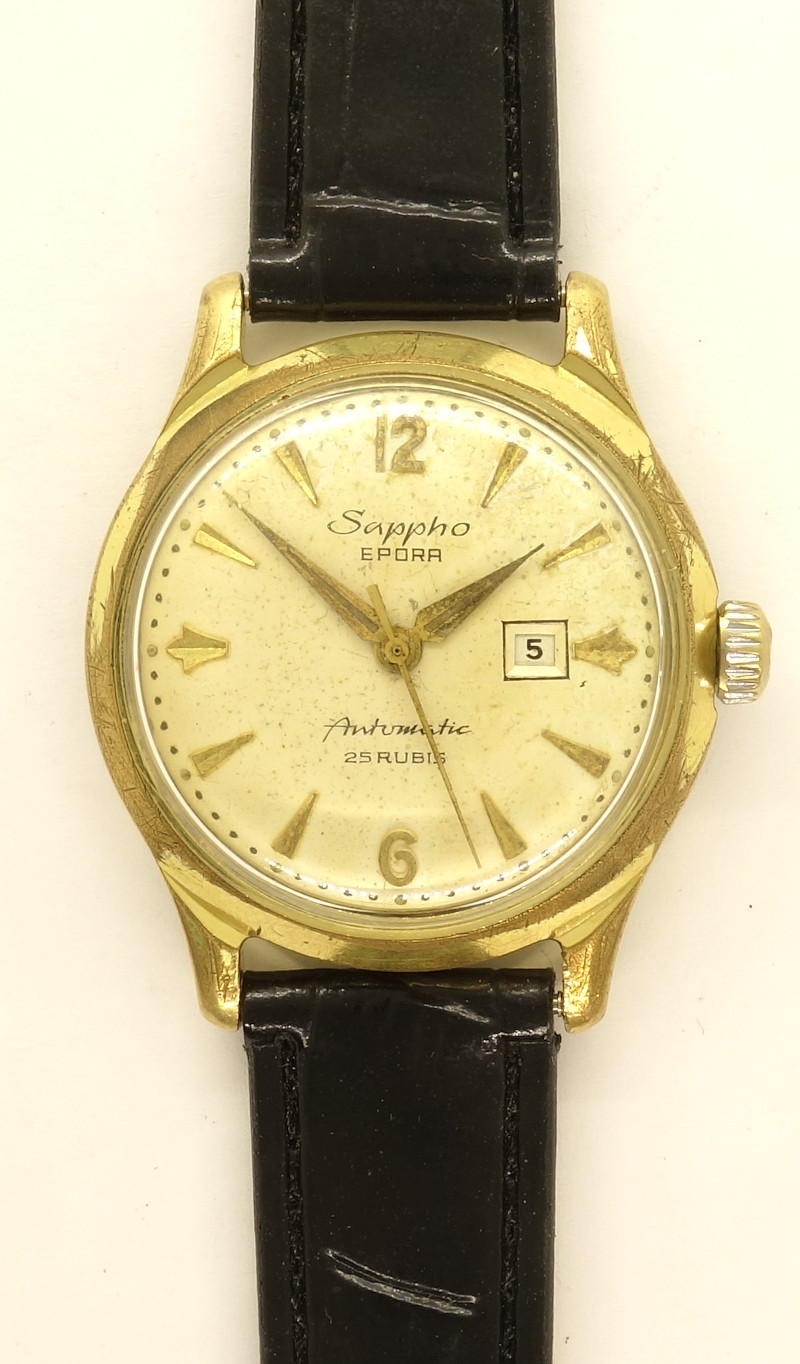Description
In the 1950s, Otero launched their first series of selfwinding movements, the caliber series 48/480, which based on the windup movement series Otero 40/41. Part of this series was the caliber Otero 481, an 11 1/2 ligne selfwinding movement with center seconds and small date indication.
Of course, on this movement, whose base plate is marked as “Otero 48”, all important bearings contain rubies.
As usual at that time, the Otero 481 uses a center minute wheel, which is directly driven by the mainspring barrel.
The remaining gear train is typical for a contemporary movement with center seconds indication: Minute wheel, third wheel, directly driven center seconds wheel and finally the steel escape wheel.
As escapement, of course a swiss pallet lever escapement is used. This is regulated by a two leg monometallic screw balance, which beats slowly with 18000 A/h. Its frequency can be adjusted with a long regulator arm.
As shock protection, a three leg Monorex shock protection is used.
Since the selfwinding module uses only a few parts and only contains one single bearing, the well marketable number of 25 jewels had to be achieved by using a number of cap jewels. On the movement side, the escape and third wheel bearings had cap jewels, on the dial side, the lever and escape wheel bearing.
The selfwinding module, which is mounted with two screws onto the movement, is as simple as genious:
The excenter pin within the ruby lined rotor bearing drives the two pawls of the excenter winding system, so that it always turns in the same direction. This gear now directly drives the ratchet wheel without any reduction step inbetween. This principly is still used today by almost every Seiko selfwinding watch under the label “Magic Lever”.
Since in the 1950s, the sliding bridle of the mainspring sometimes caused problems, Otero went their own way, used a fixed mainspring an a slipping clutch on the excenter wheel.
When the mainspring is not fully wound, the resistance of the sliding clutch is too big, so that inner and outer gears of the reduction wheel are connected.
When the inner wheel blocks because of the mainspring being fully wound, the resistance is no loger sufficient and the clutch and with it, the outer gear, slips.
Here you see the large ruby bearing of the oscillating weight axle.
In the thick axle of the oscillating weight, there’s an excentric hole, in which the pin of the lever connects.
The mechanism to lock the oscillating weight on the axle is also very well made: By turning the nose, a projection (on the left in the picture) engages in the corresponding groove on the outer oscillating weight axis and thus keeps the rotor largely backlash-free in the vertical position on the axis.
On the yet empty dial side, you can spot the Monorex shock protection and the double cap jewel plate, which covers the escape wheel bearing (good!) and the lever bearing (useless, since it doesn’t hold oil).
The Otero 481 uses a tiny calendar indication with a disc, which is turned by a very simple 24h mechanism. There’s no quickset possibility at all, which means, that you have to crank a lot to correct a wrong date number, and this will put a lot of wear on the cannon pinion.
An advantage of a date disc, compared to a date ring is, that it’s easier to mount. This kind of calendar mechanism has a bit of Tradition on Otero movements.
Technical data
| Manufacturer: | Otero |
| Caliber: | 481 |
| Caliber base: | Otero 40 |
| Size: | 11 1/2''' (measured: 25,6mm) |
| A/h: | 18000 |
| Number of jewels: | 25 |
| Escapement: | Pallet lever |
| Balance types: | Nickel screw balance (two legs) |
| Shock protection(s): | Monorex |
| Balance bearing / direction hairspring: | Counterclockwise |
| Moveable stud: | no |
| Adjust mechanism: | Long regulator arm |
| Construction: |
|
| Construction type: | solid construction |
| Winding mechanism: | yoke winding system |
| Setting lever spring: | 1 hole(s) |
| Features: |
|
| References: | Flume: K1 1957 55 |
| Inventory number: | 22012 |
